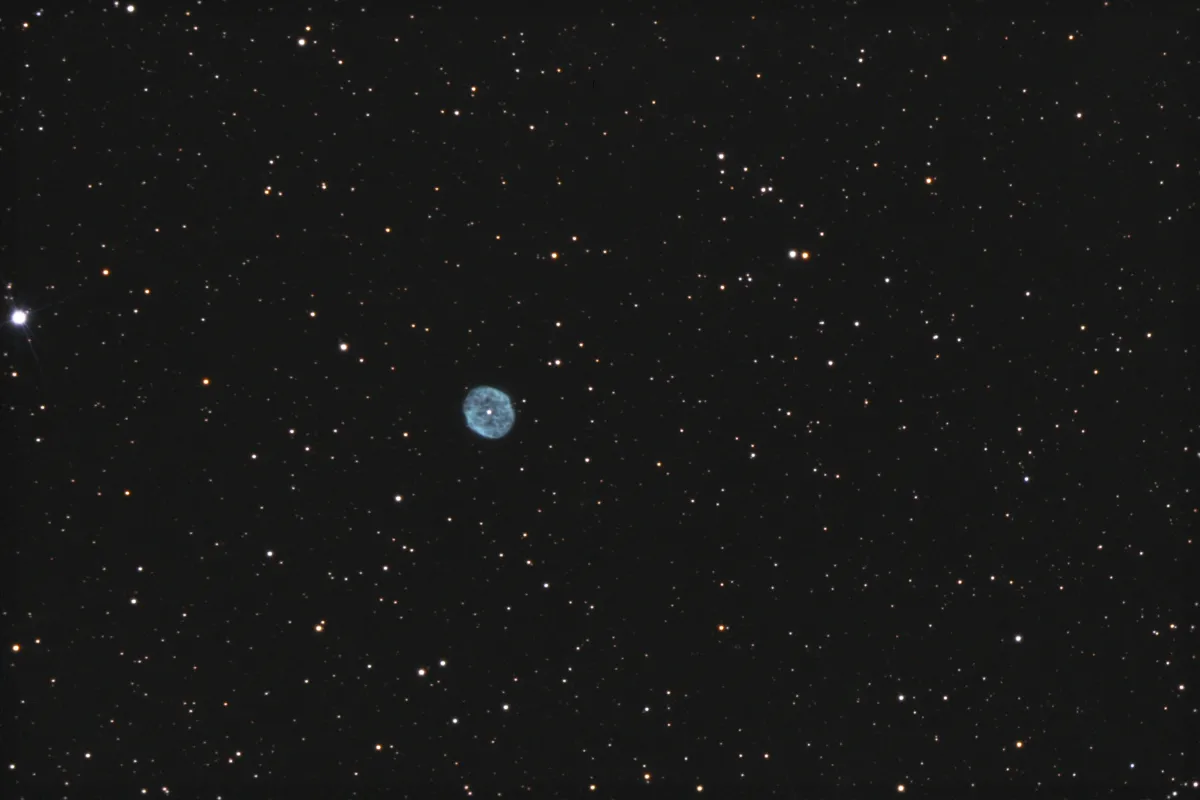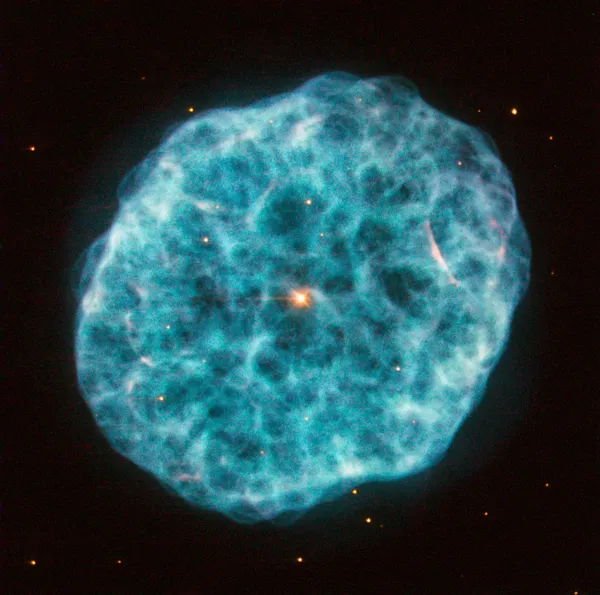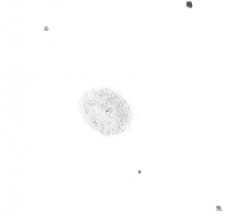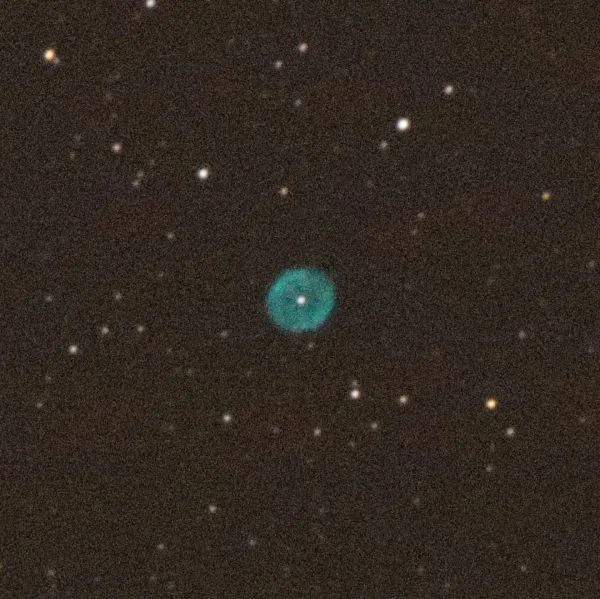Oyster Nebula (NGC 1501)

History
This planetary nebula was discovered by William Herschel on 3 November 1787 using his reflecting telescope of 18.7 inch diameter and 20 feet focal length. He cataloged it as IV 53 and noted: «A pretty bright planetary nebula. Near 1' diameter, round, of uniform light and pretty well defined. 2 observations with 360 magnified; but still pretty abruptly defined, and a little elliptical.» [464] His son John cataloged it 1864 as GC 801 and Dreyer later in 1888 as NGC 1501. [313]
Physical Properties

NGC 1501 is specified in the Vorontsov-Velyaminov classification scheme as an irregular disk (type III). The irregular texture is particularly striking on photographic and CCD images. If you were to compare the mist with something earthly, it looks most like an oyster! The central star of the nebula belongs to the class of Wolf-Rayet stars. These are stars with a very hot surface from which a particularly strong wind emanates. So they are characterized by an extremely high loss of mass. [26]
The central star is an irregularly variable with a tiny amplitude of 0.1 mag. Roger N. Clark gives in his excellent book «Visual Astronomy of the Deep-Sky» [26] the brightness of the central star as 13.5 mag. In the «Deep Sky Field Guide to Uranometria» [22], however, there is a value of 14.45 mag.
| Designations | PN G144.5+06.5: NGC 1501, PK 144+06.1, ARO 44, VV 16, VV' 22 |
| Right Ascension (J2000.0) | 04h 07m 01s a |
| Declination (J2000.0) | +60° 55' 03" a |
| Dimensions | 52." (optical) |
| Distance | 2.0 : kpc |
| Radial Velocity | +36.2 ± 1.4 km/s |
| Expansion Velocity | 37.0 (O-III) km/s |
| C-Star Designations | AG82 26, CSI +60 -04027, GCRV 2334, PLX 894 |
| C-Star Magnitude | U: 14.34, B: 15.17, V: 14.39 |
| C-Star Spectral Type | WC 6-7,OVI, WC early |
| Discoverer | HERSCHEL 1787 |
Finder Chart
The planetary nebula NGC 1501 is located in the inconspicuous constellation Camelopardalis, which is located between the more well-known constellations Cassiopeia and Auriga. The telescope is aligned using the Telrad finder as shown on the map below. The PN is roughly in the middle between the stars. β Camelopardalis (4.0 mag) and CS Camelopardalis (4.3 mag). NGC 1501 is best observed in the months from July to April and is furthest away from the Sun on 26 November.
Visual Observation

200 mm Aperture: As with almost all PN, a high magnification (over 200x) is necessary here in order to be able to find fine details. The first thing you notice is the slightly elliptical shape of the nebula. In the 200 mm telescope (f/10) and with good dark adaptation, one can clearly see that the inner area of the pane has an irregular distribution of brightness. Weaker areas south-east of the centre are particularly prominent. The central star is clearly visible in the 8-inch model with indirect vision. Apart from good seeing, you have to be lucky that the star is at its maximum brightness. The slight fluctuation in brightness of the central star would normally not be perceptible to the naked eye. However, since the brightness of the star in the 8-inch model is at the visual limit of perception, this small amplitude is still important. — 1996, Philipp Reza Heck

400 mm Aperture: In the 21 mm Ethos eyepiece, the PN appears as a striking, uniform disk. The central star is directly visible. As the magnification increases (9 mm Nagler, 6 mm Radian), a brighter edge with darker areas inside becomes apparent. With O-III filter no more details stand out. — 400 mm f/4.5 Taurus Dobsonian, Hasliberg, SQM 21.0, 3. 2. 2024, Bernd Nies
762 mm Aperture: In the Oyster Nebula NGC 1501, the central star can be held well. The roundish planetary nebula shows a bright surrounding edge. The dark, almost evenly arranged spots give the nebula, which is condensed at the edge, an appearance similar to a shirt button. — 30" SlipStream-Dobson f/3.3, EAA-Photo, Canon EOS R, 8s at ISO 25'600, Hasliberg, SQM 21.3, 3. 2. 2024, Eduard von Bergen
